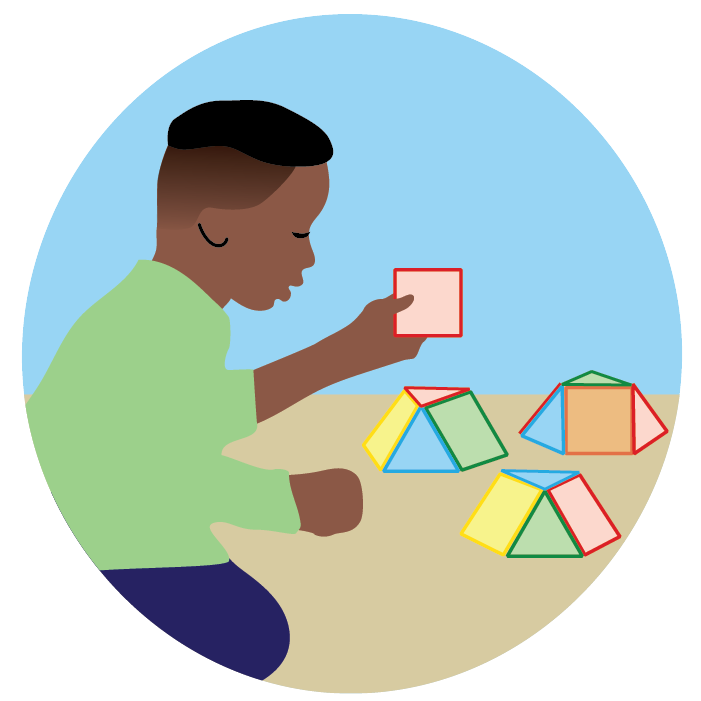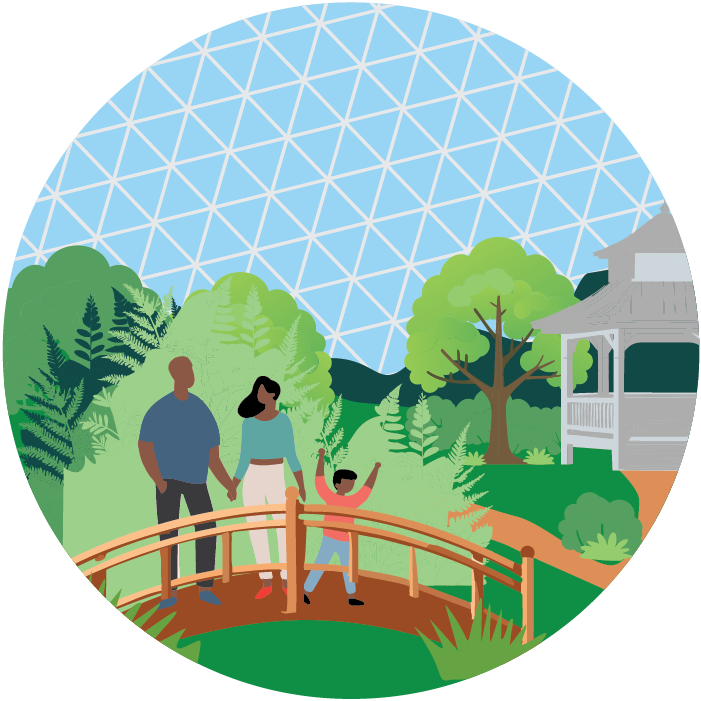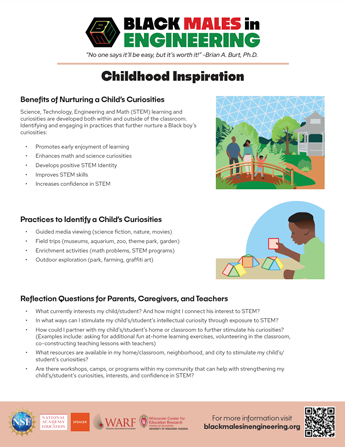Childhood Inspiration: Identifying Kids’ Curiosities In Math And Science
Benefits Of Nurturing A Child’s Curiosities
Science, Technology, Engineering, and Mathematics (STEM) learning and curiosities are developed both within and outside of the classroom. Identifying and engaging in practices that further nurture a Black boy’s curiosities:
- Promotes early enjoyment of learning
- Enhances math and science curiosities
- Develops positive STEM Identity
- Improves STEM skills
- Increases confidence in STEM


Practices To Identify A Child’s Curiosities
- Guided media viewing (science fiction, nature, history)
- Field trips (museum, aquarium, zoo, theme park, garden)
- Enrichment activities (math problems, STEM programs)
- Outdoor exploration (park, farming, graffiti art)
Reflection Questions For Parents, Caregivers, And Teachers
- What currently interests my child/student? And how might I connect his interest to STEM?
- In what ways can I stimulate my child’s/student’s intellectual curiosity through exposure to STEM?
- How could I partner with my child’s/student’s home or classroom to further stimulate his curiosities? Examples include: asking for additional fun at-home learning exercises, volunteering in the classroom, co-constructing teaching lessons with teachers.
- What resources are available in my home/classroom, neighborhood, and city to stimulate my child’s/student’s curiosities?
- Are there workshops, camps, or programs within my community that can help with strengthening my child’s/student’s curiosities, interests, and confidence in STEM?
Printable Handout
Each handout includes general information about Black males along various STEM pathways, tips or recommended practices, and reflection questions. The reflective questions have been provided to support ongoing conversations toward the support of Black males in STEM. The reflection questions can be used individually or as a group.
Associated Research Article
Burt, B. A., & Johnson, J. (2018). Origins of STEM interest for Black male graduate students in engineeringopens in new tab. School Science and Mathematics, 118(6), 257-270.


